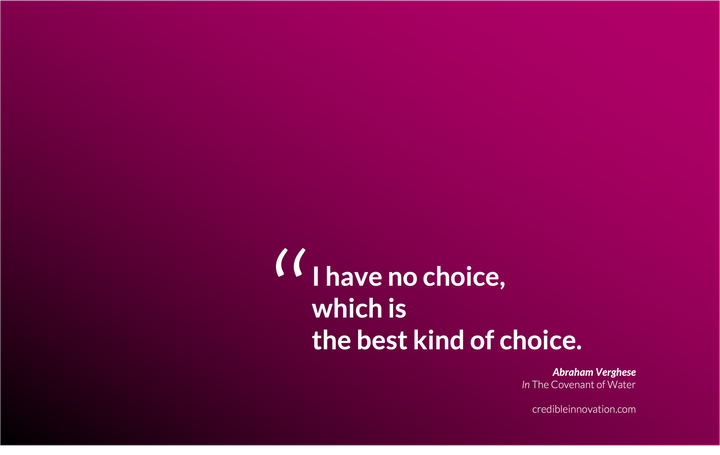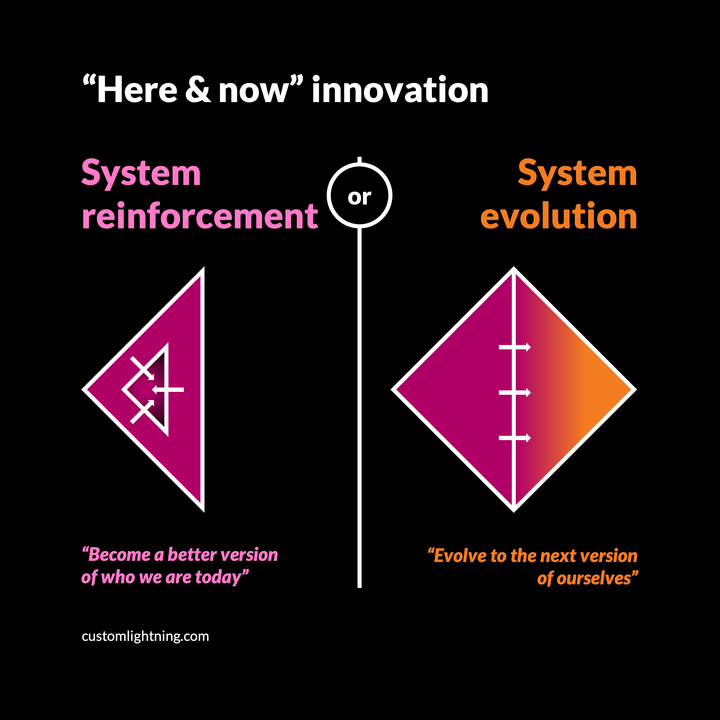[Case study] Innovation is 99% perspiration
Reject naïveté. Innovation work–both in business or beyond–takes tremendous effort even for achieving moderate results
![[Case study] Innovation is 99% perspiration](https://images.unsplash.com/photo-1639269956899-91faed942e4e?crop=entropy&cs=tinysrgb&fit=max&fm=jpg&ixid=M3wxMTc3M3wwfDF8c2VhcmNofDh8fHdpbnRlciUyMG1pbm5lYXBvbGlzfGVufDB8fHx8MTcwNTYyMjM2N3ww&ixlib=rb-4.0.3&q=80&w=1200)
... and only 1% inspiration!
TL; DR
You’d think it’s obvious that innovation work takes hard, sustained efforts. But it’s surprising how often people forget it and only consider the “1% of inspiration.”
But back to the case study that will illustrate the point:
I normally talk about "corporate" innovation. But I really mean "innovation in existing organizations." That can include non-profits and governmental organizations just as much as business.
(For example, the "godfather" of modern innovation craft, Steve Blank, has done a ton of work with non-profits and governmental agencies. Agencies and efforts like ideo.org explicitly apply our work to non-profits. Non-profits themselves have mature innovation capability, e.g., 18F in the U.S. federal government. And that’s just scratching the surface and not even considering the excellent work done by innovators with less fancy public personas.)
Here then is a case study about the effort involved in innovation work in which we visit non-profits and government agencies.
It’s about the city of Minneapolis, Minnesota, the largest city in the county where I live. According to a story by Bloomberg, the city has made significant strides in reducing homelessness, at a time when homelessness has increased across the U.S.
So far, so good. Minnesota's absurdly cold winters (I have experienced -30° F/ -34° C) make ending homelessness even more important than usual.
But what makes the story relevant specifically to doing credible innovation work is the effort it has taken even for partial success. According to a new story in Bloomberg, the city's progress has been hard and expensive to achieve and still did not result in a complete win.
This combination of major effort and messy outcomes reflects the messy reality of innovation work much better than glossy case studies–or teams' and leaders' wishful thinking–do.
The story
According to Bloomberg, Minneapolis' chronically homeless population dropped 36% in roughly a year (from November 2021 to the end of 2023), and Hennepin County, which includes Minneapolis, reduced its overall unsheltered population by 22% since 2019, even while homelessness across the U.S. was up 12% in 2023.
But the effort to get there was significant, including $100 million+ of investment, coordinated work by multiple agencies and outside advisors, and more than 20 years of previous lessons and infrastructure (presumably not sufficiently effective on their own but still possibly useful; what we'd call "a stable vision with pivots on how to reach it" in innovation talk).
Even then, in terms of outcomes, public perception is not uniformly positive. For example, in December 2023, the Minneapolis City Council declared unsheltered homelessness a “public health emergency.“ And media attention focused on a specific encampment in South Minneapolis that the city had just closed and on questions about equitable and proper treatment for the people who lived there. There were also more general questions about the balance of using support vs. force in interacting with people in homeless encampments, something on which Bloomberg's reporting touches too. And as recently as 2022, the city was seen as having made "little progress" on tackling issues related to homeless encampments.
(Note: I am offering these examples for illustration. I lack the subject expertise for a complete assessment, i.e, on whether Minneapolis’ work has been “effective” overall. It does not materially affect my point below. I recommend following up with experts on the topic to learn more.)
[Source: Bloomberg via Future Crunch]
The point for doing credible innovation work
Innovation work takes grit and persistence, not to mention expertise and massive good luck. On other words:
Innovation work is 99% perspiration and only 1% inspiration.
And even after all that effort, you may only achieve moderate wins. By contrast, massive wins also tend to correlate massively-attractive contexts/ categories: “A rising tide raises all ships.” (No, of course not always. Often.)
It's tremendously important that anyone who takes on or leads innovation work recognize that toil. It's too easy to get caught up in pretty offices and upbeat team cultures, in empathy with deserving users and exciting data showing "product-user fit." Don’t put on rosy-colored glasses!
Consider all that it took just to get to the results that Minneapolis achieved, according to Bloomberg's reporting:
- A true "must-solve" purpose: This work started with a pretty simple and brutal fact: Be outside in the Minneapolis winter for any significant time period without proper protection and you die. Yes, homelessness is a terrible condition for people no matter where they encounter it. But in a climate like ours, solving homelessness is mandatory.
- Hard choices: Even with a "must-solve" purpose, the team still had to start with one part of it: “You’ve got to start somewhere. If the problem is super-big and insurmountable, then ... [f]igure out what’s the most burning issue, who needs the most support, and really put resources and attention there.”"
- Decades of prior efforts: As far back as the late 1990s, Minneapolis was among the first U.S. jurisdictions to test a new and innovative program. And presumably, other efforts extended further into the past. The city has had time to build up tremendous lessons, stories, experience, and infrastructure.
- Seeking best-in-class outside expertise: Minneapolis appears to have made progress by using the "Built for Zero" program created by an organization called Community Solutions. That alone is a big deal. Rejection of ideas “not invented here” is just as common in innovation as in other disciplines.
- Great infrastructure and resources: The city was able to invest at least $106 million of left-over Covid-era funds to fuel its effort. As those programs end, finances may become more of a challenge.
- Major effort by a professional team, including "getting out of the building:" In the words of the CEO of the National Association to End Homelessness, “[Minneapolis] used their Covid money to do some innovations, to ask people what they wanted and needed,” she said. “And then they built a program responsive to that.” For example, county employees maintain a daily "by-name" list so they know exactly who is experiencing homelessness that day and can build relationships. They visit those people wherever they are, under bridges or in encampments, to understand what's happening. That and much more is unsung but important ongoing work.
- Strategic prioritization: Teams "prioritize units based on medical vulnerability, client choice and chronic homelessness status." They "really [try] not to do a one-size-fits-all response."
- Unearthing insights and reframes that are only obvious in retrospect and might be controversial until then: For example, the city switched from a focus on dealing with people's challenges, like addictions, first to taking a "housing-first approach" that might make some people wonder if that's a good use of taxpayer money. But in practice it turns out that what "we believe is kind of the secret sauce here is that housing is always the goal[.] ... But you need to invest in both places for people to go, and people to help get them there.”
Ok let's call it good. Even this limited list includes eight different practices that matter to great innovation work. And again, even then, the results appear to have been good but nowhere close to absolute victory.
It's just that hard. Good thing it's worth it!
Footnotes
Find the full story here (External link)
Holder, Sarah. "Beating the Odds on Chronic Homelessness in Minneapolis." (Dec. 22, 2023). Bloomberg. Accessed Jan. 18, 2024.
Organizations involved or mentioned (External links)
Hennepin County Office to End Homelessness
National Alliance to End Homelessness
U.S. Department of Housing and Urban Development
Further reading
Hervey, Angus and Amy Rose. "Good News on Cancer in Canada, Elephants in Africa and Batteries in China." (Jan. 18, 2024). Future Crunch newsletter. Accessed Jan. 18, 2024)
Credits
"A snowy street with a building and street lights" photo by Josh Hild on Unsplash
Disclaimers
External links for your convenience. I do my best to link to reputable sources. But I cannot guarantee or accept liability for 3rd-party links beyond my control.
I have no affiliation with or investments in organizations mentioned in case studies–nor do I ever unless explicitly called out.
The organizations mentioned do not endorse me in any way. Nor do I endorse them. These case studies are offered merely for general information purposes. They do not imply that certain choices or actions are effective or ineffective, either for the organizations mentioned or for you. Consult your own professionals before taking action on anything mentioned here.
I have received no incentive of any kind for mentioning or not mentioning organizations or for the perspectives I take. Opinions voiced above represent my subjective, editorial take, based on public data.
I use all third party content in accordance with "fair use," "open source," and similar permitted uses, to the best of my knowledge. Please contact me in case of legitimate questions.




